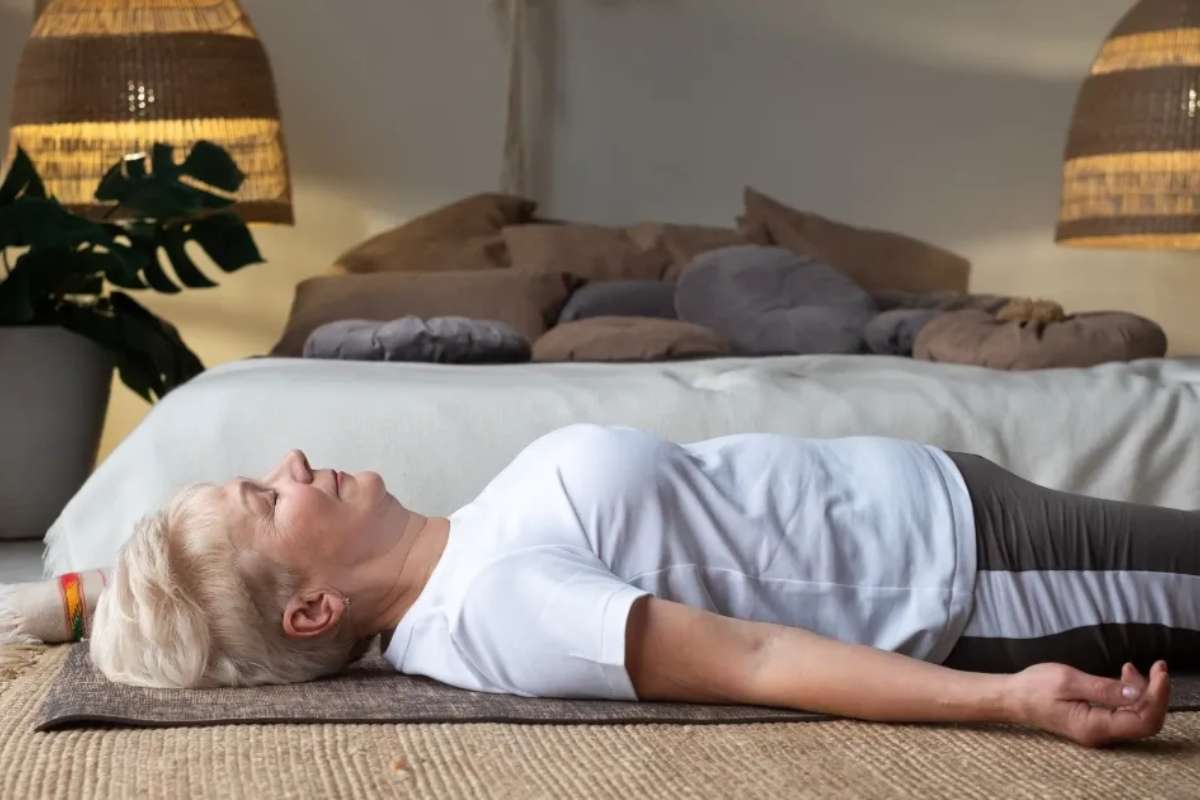How about you wake up feeling stiff, your back aches, and no matter how many times you toss and turn at night, sleep never feels as refreshing as it should. Now imagine the opposite—waking up feeling light, refreshed, and pain-free. What if the secret isn’t a fancy mattress but something much simpler?
Sleeping on the floor is an ancient practice, deeply rooted in cultures like Japan, India, and even parts of Africa. For centuries, people have believed that a firm surface supports the spine, improves posture, and even enhances sleep quality. Yet in today’s world, where plush mattresses and memory foam beds dominate, the idea of ditching the comfort of a bed might seem radical.
But could modern mattresses be the reason why so many people suffer from back pain? Could sleeping on a firm surface be the natural, cost-free solution to better sleep and overall well-being? This article will discuss the science, the risks, and the benefits of sleeping on the floor to see if this minimalist approach to rest is worth trying.
How to Sleep on the Floor Correctly?
If you’re curious about this, simply lying down on a hard surface might not be enough. With the right setup, sleeping on a firm surface can be a comfortable and effective way to improve rest and posture. To transition comfortably, follow these steps:
- Choose a Soft Yet Firm Base: A thin yoga mat, a Japanese tatami mat, or even a folded blanket can provide some cushioning while keeping the surface firm.
- Find the Right Position: Back sleeping is the best option for spine alignment. If you’re a side sleeper, place a thin pillow between your knees for support.
- Use Minimal Pillows: A small, supportive pillow under your head will keep your neck in a neutral position. Some people prefer no pillow at all for proper spinal alignment.
- Start Slow: Start by sleeping on the floor for short periods before making it a full-time habit. Your body needs time to adjust.
- Stay Warm: Floors can get cold, so use a blanket or layer up to stay comfortable.
Why Do We Sleep?
Before deciding whether sleeping on a floor is good or bad, let’s take a moment to understand why sleep is so important. Sleep isn’t just about closing your eyes, it’s a crucial process that keeps your body and mind functioning properly. The quality of your sleep matters just as much as the duration. If sleeping on the floor improves your sleep, it could have a significant impact on your health.
- Physical Recovery: While you sleep, your muscles and tissues repair themselves. Sleeping on the floor may help support this natural process by keeping your body in proper alignment.
- Cognitive Processing: The brain processes memories and information while you sleep, helping with learning and decision-making.
- Hormonal Balance: Sleep regulates hormones responsible for stress, growth, and appetite. Poor sleep can lead to weight gain, mood swings, and weakened immunity.
- Immune System Support: Lack of sleep makes the body more vulnerable to illness, while quality sleep strengthens immunity.
Risks and Side Effects:
While sleeping on the floor has its advocates, it isn’t for everyone. Here are some potential downsides:

- Cold Discomfort: Floors can get significantly colder than beds, especially in winter. If you’re not properly insulated, this can lead to stiff joints or even a cold.
- Initial Discomfort and Pain: Switching to a hard surface can cause soreness in the beginning, especially for those used to plush mattresses. The body needs time to adjust, and improper posture can make back pain worse instead of better.
- Not Ideal for Certain Health Conditions: For those with chronic joint pain, arthritis, or mobility issues, sleeping on the floor can be too harsh on the body. Getting up and down can also be challenging for older individuals.
- Pressure on Joints: Sleeping on a hard surface can create pressure points, particularly for side sleepers. This can lead to discomfort in the hips, shoulders, and knees. Despite these potential risks, many people report feeling better once their body adapts.
Benefits of Sleeping on the Floor
If you can adjust to sleeping on a firm surface, you might experience several surprising benefits:

1) Better Posture and Spine Alignment
Soft mattresses often let the body sink into unnatural positions. A firm surface helps keep the spine in its natural shape, reducing the risk of chronic back pain.
2) Reduction in Back Pain
Many people who switch to sleeping on the floor report relief from lower back pain. Without a sinking mattress, the body stays in better alignment.
3) Improved Blood Circulation
A firm surface encourages better blood flow by preventing excessive sinking and misalignment. This can reduce numbness and tingling often caused by soft mattresses.
4) Lower Cost and Simplicity
Let’s be honest, high-end mattresses can be expensive. Sleeping on the floor eliminates the need for costly beds, making it a budget-friendly option.
5) A More Natural Sleeping Position
Cultures that traditionally sleep on the floor often have fewer cases of back pain compared to those who use thick, soft mattresses. This suggests that firm sleeping surfaces may support better overall spinal health.
Is Sleeping on the Floor Good or Bad for Different Age Groups?
While some people swear by the benefits, age, and physical condition play a big role in whether sleeping on the floor is a good idea.

- For Young Adults: Young, healthy individuals often find it easier to transition to floor sleeping. Their bodies adapt quickly, and they benefit from improved posture and spinal support.
- For Middle-Aged Adults: For those in their 40s or 50s, sleeping on the floor can still be beneficial but may require more support, like a thin mattress or additional padding. It’s essential to listen to your body and ensure it’s not causing unnecessary strain.
- For Seniors: Older adults, especially those with joint pain, arthritis, or mobility challenges, may find sleeping on the floor uncomfortable. Getting up from a low position can be difficult, and the lack of cushioning may worsen pain rather than improve it.
- For Children: Many kids around the world naturally sleep on mats or floor bedding. As long as they’re comfortable and warm, it’s usually fine. However, very young children may need a soft mat to prevent discomfort.
Conclusion
Sleeping on the floor isn’t for everyone, but for some, it can be an exceptional alternative. It has been practiced for generations in various cultures, and many claim it helps with back pain, posture, and even overall sleep quality. However, it also comes with some risks, especially for older individuals or those with joint issues. If you’re considering making the switch, start slowly and listen to your body. With the right adjustments, a firm surface might be the simple, natural sleep solution you’ve been looking for.



















